- 1. What is Bike Touring?
- 2. What Kind of Bike is Needed?
- 3. How to Take a Bike Tour
- 3.1. Secluded in Nature or Populated Areas
- 3.2. Traffic
- 3.3. Road Size
- 3.4. Wind and Weather
- 3.5. Overnight Accommodations
- 3.6. Timing
- 4. How to Carry Your Gear
- 5. Where to Stay
- 6. How to Plan a Group Tour
- 6.1. Map and Share the Route
- 6.2. Follow the Food
- 6.3. Setting Expectations
- 7. What to Pack for Your Bike Tour
- 7.1. Helmet
- 7.2. Panniers
- 7.3. Repair Kit
- 7.4. Important Personal Items
- 7.5. Water & Food
- 7.6. Lights and Reflective Vest
- 7.7. Protective Clothing
- 7.8. Bell
- 8. Extra Tips
- 8.1. Give Your Bike a Tune-Up
- 8.2. Practice Makes Perfect
- 8.3. Pump the Brakes
- 8.4. Know Your Rights
- 9. Get Ready to Ride Like the Wind
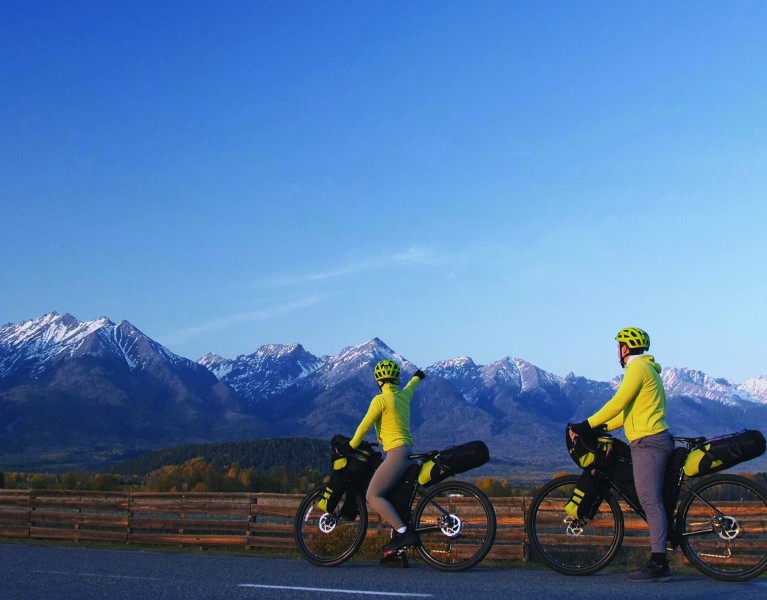
How to Prepare for a Bicycle Tour
Table of Contents [Show]
Riding a bicycle is the ultimate rite of passage for a child. As we grow older, driving a car becomes more important. But sooner or later, even as an adult, you can’t deny the exhilarating feeling of the wind in your face as you dive down a steep hill on a bike. There are many benefits to riding a bike over driving a car – physical exercise, preserving the environment, saving money and access to nature-filled trails.
So, why not go on a bicycle tour? As long as you know how to ride a bike, you’re already ahead of the game. With a little preparation and some planning, you can embark on an amazing two-wheeled adventure. Here’s how you can prepare for your bicycle tour:
What is Bike Touring?
Rather than biking for exercise, to commute to work, or for sport, a bike tour is a grand adventure on two wheels. Tours can take you anywhere and last as long as one day, a couple of weeks, or even months.
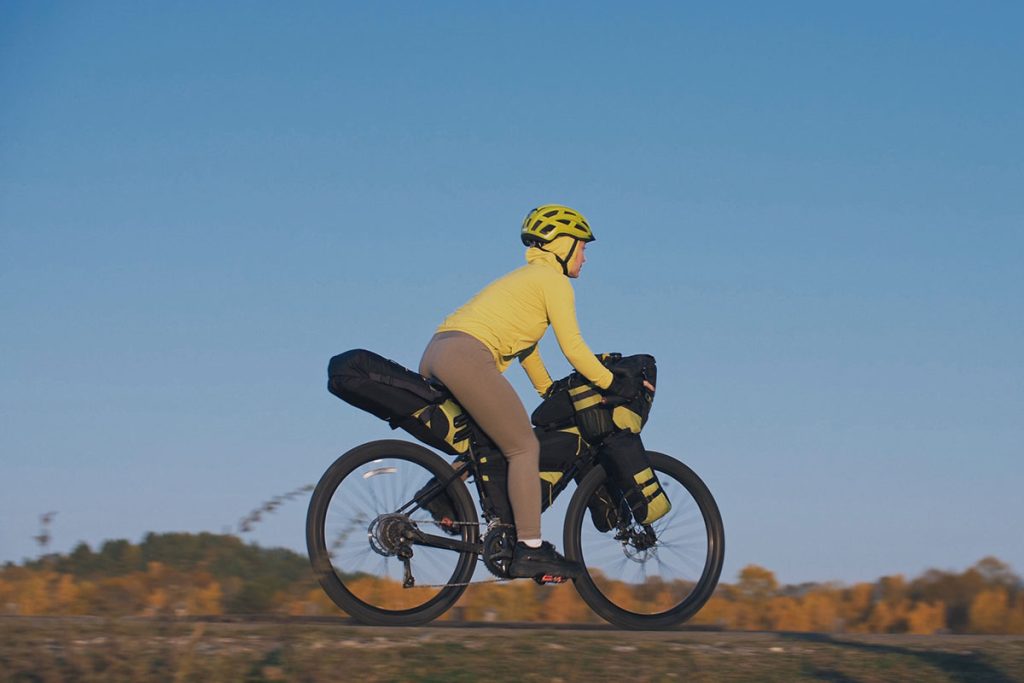
What Kind of Bike is Needed?
The kind of bike needed depends on what type of tour you’ll be taking. Consider these questions when deciding what kind of bike to use:
- Will you be mainly on paved roads or off-road?
- How long is your tour?
- Do you want to ride fast or slow?
- How much weight will you be carrying?
Road bikes are a great option for riding mainly on paved roads. Mountain bikes are nice for dirt or gravel roads, and a hybrid bike provides the best of both worlds. Upgrade any bike with better components and gears for easier uphill and speed on flats. One of the most important aspects of finding the right bike is making sure it’s the correct size for you!
How to Take a Bike Tour
There are many amazing options for bike tours. Before planning your adventure, consider the following:
Secluded in Nature or Populated Areas
Many amazing tours travel through gorgeous natural areas such as National Parks, where you can spend the night camping under the stars. You can also opt stay closer to more populated areas for a greater sense of security and comfort knowing you’re close to people, stores, and places to stay.
Traffic
Traffic can cause unwanted stress and even danger while touring. When planning your tour, observe traffic patterns on the roads you plan to take.
Road Size
Many major roads don’t offer dedicated bike lanes, but some offer plenty of space on the shoulder to maintain safe distance from cars and trucks. One amazing location that can be rather dangerous is the California / Oregon Pacific Coast Highway. The scenery is incredible, but there’s little-to-no side lane for a bike and logging trucks dominate the route. Having an understanding of road conditions beforehand helps you prepare and stay safe.
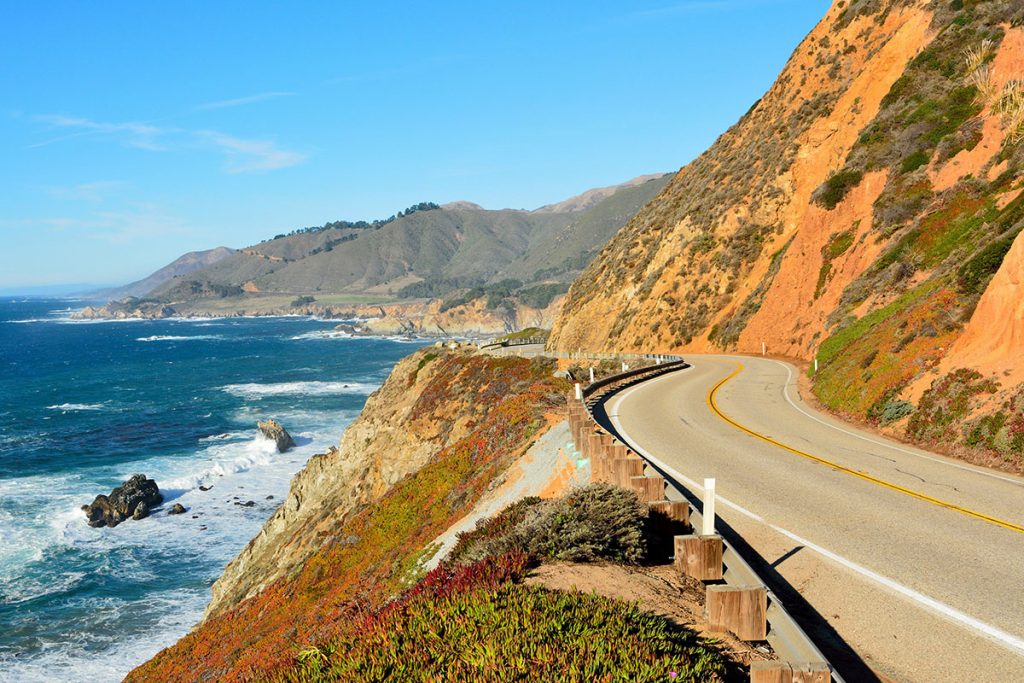
Wind and Weather
Wind and weather can make or break your tour. Vast, open areas can be extremely windy and make your trip that much more difficult. Biking in the rain is no fun either, so it’s always a good idea to think about weather when planning your trip.
Overnight Accommodations
Is your plan to mainly camp, stay in hotels, or maybe a mix of both? Think about how far you want to be from cities or towns so that you can carry enough food and water, especially if you decide to camp in the wilderness.
Timing
Think about the time of year, and even the time of day, you’ll be riding. If you plan your trip mid-summer, for example, you'll encounter tourists in popular areas, making it difficult to find camping spots or a hotel. Riding through rush hour is never fun either, so plan your daily routes accordingly.
How to Carry Your Gear
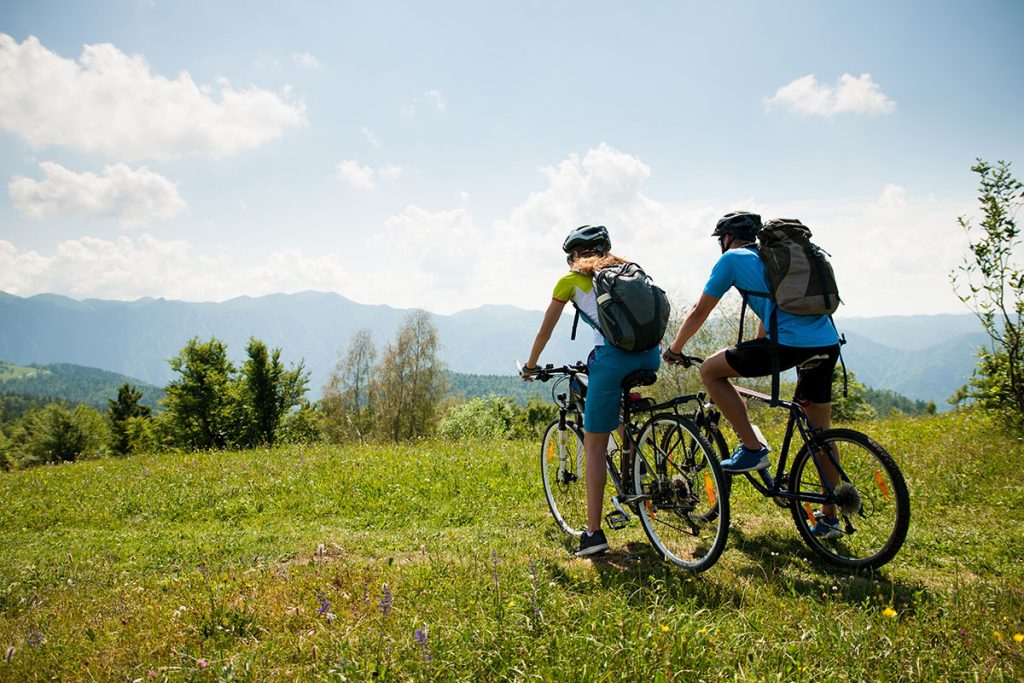
No matter how long your bike tour is, you'll need to carry supplies. The most efficient way to carry things on your bike is to install a bike rack on the back of your bike and attach two panniers on either side of the tire. Named after the French word for baskets, panniers are large bags that offer roomy storage, protection from the weather, and the ability to quickly disconnect from the rack, so you can take your gear with you. You’ll be able to pack clothes, food, water, and tools in these bags. You’ll also have space on the rack to strap in a tarp, tent, sleeping bag or any larger item needed for your trip.
Here are some ideas for adding more storage space:
- Create the same setup at the front of your bike for extra space.
- Attach a basket on your handlebars for easy-access items.
- Install water bottle carriers within the frame.
- Carry a small pack on your back.
- Pull a bike trailer.
Just remember, adding or pulling weight makes uphill riding trickier. It all depends on your mission and what your plan is. If you’re a beginner and only touring for a few days or weeks, a back rack, two panniers and a small backpack will be sufficient.
Where to Stay
The wonderful thing about biking is the convenience of traveling to places that normal vehicles can’t reach. If you like camping in the forest, you can discover special places on a bike. You can also stay in hotels, AirBnBs, or use a website known as WarmShowers, which is just like couch surfing but designed for bicycle tours This is a great opportunity to save money while staying at unique locations and meeting people who have plenty of experience with bike tours.
How to Plan a Group Tour
Planning a bike trip can be easy with just a few people, but a large group tour requires a little more planning and a lot more communication. Here are a few suggestions to assist your planning:
Map and Share the Route
Having a starting and ending point will give others an understanding of they’re going. Sharing a GPS file or using MapMyRide is a great way to keep things clear among everyone in the group. This allows some riders to move ahead, or others to lag behind, without worrying about losing each other.
Follow the Food
Whether you’re planning a one-day trip or a week-long adventure, it’s always a good idea to plan your route around food stops. You may have different opinions on what everybody likes to eat, so it’s crucial to plan the trip where everyone gets a chance to eat the food that they want. If you plan on making the food yourself and not eating out, be sure there are proper grocery stores on your route so you don’t have to deal with gas stations or fast food locations.
Setting Expectations
What are the expectations that everybody should know? Will there be a certain meeting point each day? Will there be hills, dirt roads, or heavy traffic? Will places be reserved to stay overnight, or are you camping? These are just a few questions to consider when planning your trip. It’s always smart to let everybody know exactly what they’re getting into before your journey.
What to Pack for Your Bike Tour
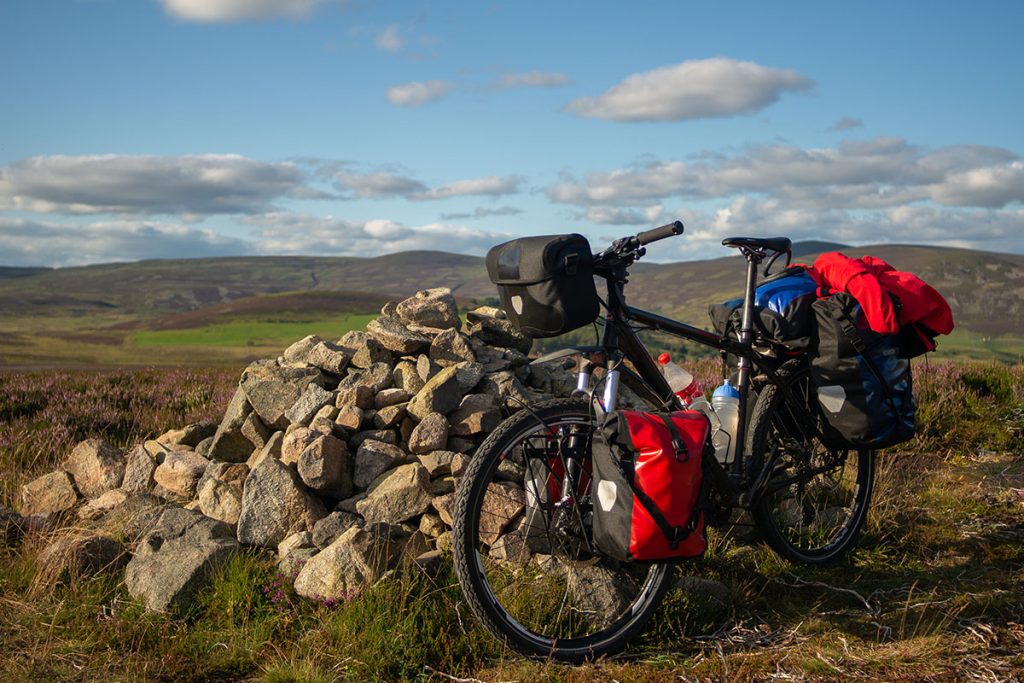
Helmet
A helmet is a must, and is the most important item for your trip. Your helmet may end up being a lifesaver. Always wear a helmet, no matter what.
Panniers
Panniers are the side bags that attach either to the back or front of your bike and provide storage space for your gear.
Repair Kit
A repair kit should include tire patches, spare tubes, tire levers, a pump or CO2 cartridge, hex wrench set, multi-tool, chain lube, duct tape, and zip ties. If you are going on a long-distance ride, consider taking spare parts such as a brake cable, extra nuts & bolts, and replacement chain links.
Important Personal Items
Cash and credit cards are necessary for food, extra gear, and overnight accommodation. Your ID and insurance card are helpful in case of any emergencies, and your cell phone and charger are essential. Don’t forget any necessary medications.
Water & Food
You expend tremendous energy cycling, so plenty of water and food are a must. Carry at least two water bottles, as well as a CamelBak for water on the go. Dehydrated foods, protein bars, and nuts are easy to carry for quick nutrition.
Lights and Reflective Vest
Front and back lights are a must when riding in the dark. A reflective vest adds extra protection so that cars will clearly see you.
Protective Clothing
Depending on the season you’re riding in, carry essential clothing. Suggested items include a windbreaker and/or rain jacket, leg warmers, long sleeve shirt, a neck gaiter, hat, and merino wool socks.
Padded shorts, biking gloves, and glasses are also important items to protect sensitive areas of your body.
Bell
Attaching a bell to the front of your bike is useful for passing other bikers on the road.
Extra Tips
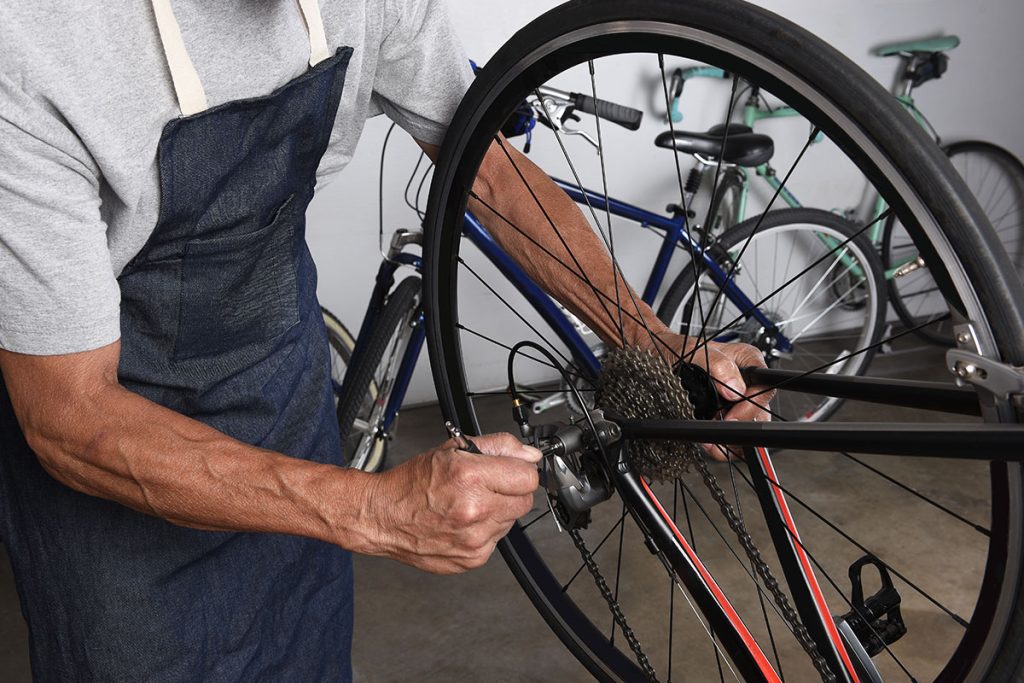
Give Your Bike a Tune-Up
Just like a car needs a tune-up every now and then, it’s important to keep your bike maintained. If you’re not an expert, take your bicycle to a reputable shop for a full inspection and tune-up. It’s incredibly helpful to talk to someone with bike expertise for recommendations before your trip.
Practice Makes Perfect
Take time to learn about your bike before your trip. Practice replacing a tube, replacing a chain, fixing spokes, and changing cables. This will save time and stress by knowing how to fix certain parts of your bike before your adventure.
Pump the Brakes
When traveling long distances on steep downhills, be sure to alternate squeezing between the front and back brakes. Constant braking may cause the rims to overheat. If you notice this happening, take five minutes to pull off the road to give your brakes a break.
Know Your Rights
You have as much right to be on the road as any other vehicle. Brush up on biker etiquette, and learn how to ride like a true road warrior.
Get Ready to Ride Like the Wind
A bike tour is a great adventure. Rather than road tripping in a car, riding a bike gives you more freedom to explore, a chance to truly breathe the fresh air as you travel, and time to slow down and enjoy the scenery. With so much movement comes many sore muscles, so take time after each session to stretch and relax. Enjoy your two-wheeled journey of a lifetime!
Featured image by: Ivandanru.


